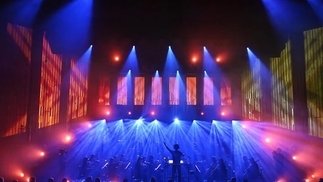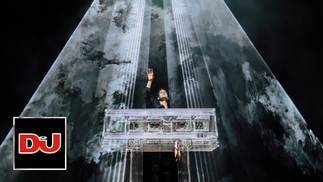MAKE SOME NOISIA!
Dutch trio Noisia might have the studio skills to soundtrack the increasingly sophisticated world of video games, but with their latest EP they're also on a mission to take drum and bass back to its rough and raw roots...
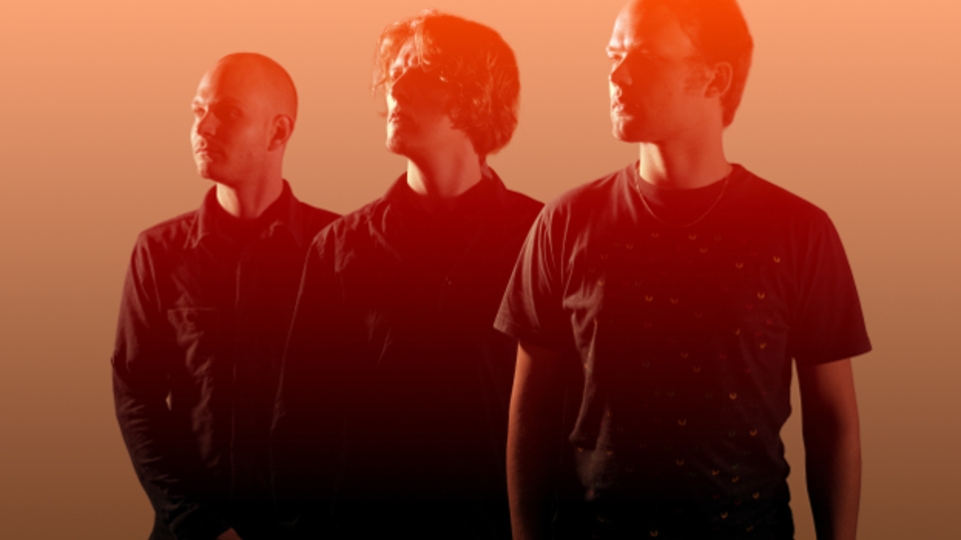
Noisia’s hometown of Groningen in The Netherlands has a population of fewer than 200,000. This number is half of the Insomniac-reported total attendees over the three days of Electric Daisy Carnival Las Vegas this year, where the Dutch trio performed with Foreign Beggars as I Am Legion. While the population of Groningen might be intimate, it is the hub of Northern Holland, a teeming university town with open-all-night bars and clubs, and its own red-light district. It is in this locale that Noisia’s dark and techie sounds are created, so full of aggression in contrast with their surroundings.
Inarguably one of the leaders of drum and bass for the last decade, Martijn van Sonderen (30), Nik Roos (31) and Thijs de Vlieger (32), are revered for their technical prowess by musicians in many different genres. With over 400 tracks in the group’s back catalogue prior to the release of its debut album, Split The Atom in 2010, the trio's forays into various styles is wide reaching. Though drum and bass remains at the center of their collective heart, they have produced crossover hip-hop albums, collaborated with metal legend Korn and scored the video game Devil May Cry, to touch on just a few accomplishments. For Noisia’s latest, the eight-track “Purpose” EP, the group returns to pure, immaculately produced, straight-to-the-middle-of-the-dancefloor-at-the-peak-of-the-night d&b.

“It is consciously limited in scope” says Noisia’s flowingly locked Prince Charming, De Vlieger, of the EP as he settles in for an all-nighter at the trio’s freshly minted, 500 square meter, triple studio complex, De Noisia Kantoor mark III, looking a bit like the Beethoven or Mendelssohn of the EDM world, speaking perfect English, his accent more British ex-pat than laced with Dutch inflections. “We did tracks we would DJ ourselves. Drum and bass is where we’re from and where we’re still at DJ-wise. Our shows consist 90 percent of drum and bass. It felt weird that more and more we were filling up our sets with other people’s tunes because our own tunes were getting too old to play. We needed our sets - and other people’s sets - to be full of Noisia tunes again. In a way, the EP is really safe. We know it’s what people want. It’s also what we want, but it’s not all that we want.”
A combination of tracks written expressly for the EP, previously unfinished tracks and completed collaborations that just happened to be with Noisia regular Phace (the title track), Prolix (“Asteroids”) and Evol Intent (“Long Gone”), “Purpose” is so named because of its specific intention in creation. A scroll through the trio’s “Noisia Selects” ongoing playlist on Spotify gives the listener a good indication of where the inspiration for “Purpose” comes from. A pre-selected 70 or so tracks by De Vlieger, “Noisia Selects” started with 25 of these and each Wednesday five more are added. De Vlieger is quick to point out the playlist is not meant to reflect drum and bass history, but rather Noisia’s drum and bass history showcasing the releases that have had the most impact on what they do.
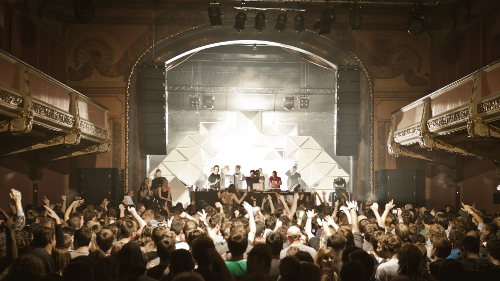
All three members are equally comfortable in the studio and could solely take on any of the production responsibilities. With van Sonderen and De Vlieger DJing most weekends, snapping back to studio mode every few days isn’t that simple. For “Purpose,” most of the tracks were either started by Roos or started by Roos and a collaborator - with the exception of “Shaking Hands With Danger,” which was put together from scratch by van Sonderen. De Vlieger tends to work on the arrangements, with particular magic occurring on “Leopard Slug” where he has embedded a few tricks for the Noisia-specific trainspotters. Their fans may beg to differ, but De Vlieger insists that his group is not about creating something that didn’t exist before so much as creating something in the tradition that they love.
“The EP is stuff we grew up on,” he says. “The track ‘Running Blind,’ is a total rip-off/homage to Bad Company when they were killing everybody with every new track. We wanted to bring back that energy. Drum and bass keeps developing. The sound goes out of style, comes back into style. The tracks on the EP, some of them are totally new with no reference and some of them sound old but are technically new. ‘Purpose’ is definitely trying to be the best we can within the boundaries that we love.”
The work-in-progress De Noisia Kantoor mark III has expanded these boundaries. Housing identically fitted rooms for each member, as well as accommodating their Vision, Division and Invisible record labels, their artists and tour management, plus a sports field and a patio, the complex has been in the works for the last few years and feels like a family place for Noisia. Built in the shell of a former paper factory, the weight of the complex was a huge consideration as each of the studio rooms is 65 tons. In the previous locale, the three could collaborate, but it was not conducive to any of them working separately. A small, second room functioning as a B studio (where Skrillex's "Scary Monsters And Nice Sprites” was started) wasn’t cutting it with bad acoustics, bleed from the main room and a claustrophobic atmosphere.
Particular to the new studios are diffusers: bits of wooden beams that reflect sounds in different frequencies in order for the ear to get an even response in reflections. Decorating the walls, as well as the ceiling, the three-dimensional geometric pieces look like modern art, and in De Vlieger’s case function as cubbies for his many bits, saving him having to put another closet in his room and subsequently degrading his acoustics. (See a picture of one of the rooms below)
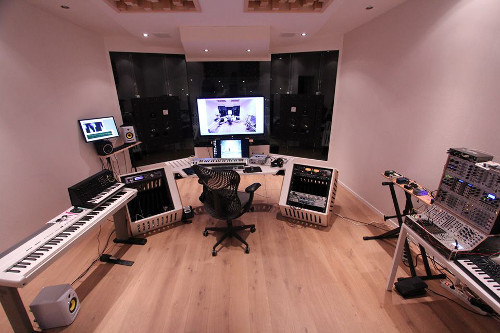
“The human ear is always busy interpreting its environment by reverbs and reflections,” he explains. “If there are no reflections, your ear still looks for them, but it has to listen harder to get the information. What people get in studios are really tired ears because the ears are constantly working and not getting anything. If you’re in a dead room, you hear your own blood streaming and your lungs functioning and you just have to leave. The diffusers are here so we get some reflection in our ears and they don’t tire too much by overanalyzing the sound.”
Noisia’s capabilities are growing, but the general public’s ears are keeping up - or not keeping up - at differing level with the trio’s progress. Over the last few years drum and bass has been introduced to more conventional engineering, while drum and bass style engineering has infiltrated other genres of dance music. Dubstep took drum and bass sounds to different tempos, allowing more unadventurous ears to get used to those elements. At the same time, pop music has elements of drum and bass and there have been drum and bass pop hits. All of these have made the generally fringe genre more accessible. Noisia continually gets swept up and pushed back in waves, but it has had a steady run for a long minute now, garnering some diversity in its fanbase, which, according to De Vlieger, has historically been WASP-ish.
Keeping the in-person Noisia experience DJ-based by using Ableton, it is De Vlieger and Sonderen who man the alphabetized and key color-coded selection. Taking turns with choosing the tracks and mixing, with a profile as big as Noisia’s you would presume unconditional veneration from the masses - at least, those with bass tendencies - but that is not always the case. Following Crizzly in the Bass Pod at EDC Vegas 2013, the trio expected the rammed area to remain so but the crowd flowed over to Knife Party performing at the same time in the Kinetic Field.
“It’s never fun to be confronted with the fact that a lot of people don’t like what you do,” says De Vlieger ruefully. “Normally you don’t see it, because it’s your show and people come there for you. But then you play a big show and everyone leaves. I don’t think I’m ever going to get used to that feeling. And it’s always because of you, not any other factor. If we made more appealing music - which we will never do, promise - then people would never leave.”
It would be great to win over everybody, but the long-term goal for Noisia is to become strictly studio musicians. The start of reaching this goal is under way with the trio’s production of the entire score for the video game Devil May Cry (2013), a distinct move away from creating music that only has the group’s audience in mind. Plus, it’s an ego check for the guys whose compositions are overridden by the sounds of the game itself. Devil May Cry followed Noisia’s remixes of Klaus Badelt’s orchestral score for Motorstorm: Apocalypse (2011). For that, Noisia were asked to use Badelt’s sounds to create the soundtrack for the final day of the game’s virtual three-day apocalypse. The first day is Badelt’s original material, the second day Elite Force remixes and the third day Noisia’s remixes, providing the aural accompaniment for the heightening intensity of the experience.
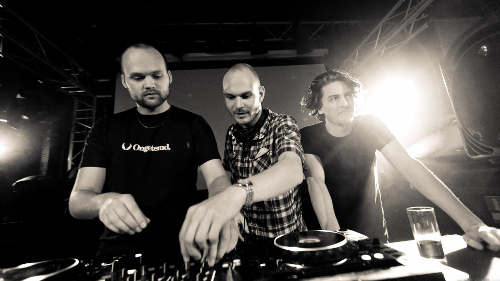
Noisia’s remix stamp shows up in both the likeliest and unlikeliest of places. Whether it’s a remix for Moby, Skrillex or Katy Perry, Noisia’s approach is the same, with each commission taken far too seriously. “If the audience doesn’t like a remix, they just listen to the next song, there’s not a lot to lose,” says De Vlieger. “But we feel there’s a lot to lose, like if we do one rank tune then everyone is going to find someone else to love.”
Unlike remixes, when in the producer’s seat for other artists Noisia can remove itself from that position and put someone else as the focus. Having already produced whole (and part) albums for British indie group Hadouken!, Dutch hip-hop MC Kraantje Pappie and US metallers Korn, among others, the hurdle of taking itself out of the spotlight is one Noisia now has in its rear-view, but was an action that took getting used to.
“To disregard your past, the tradition you’ve built up, and your little world of sounds, to leave that and go into way more universal sounds and find something special there can be scary,” says De Vlieger, who, to his pleasant surprise, just minutes ago heard one of Pappie’s Noisia-produced tracks in a store on a shopping run. “When we work with people who do something that is not that related to our thing, we take their world as a starting point. When you don’t know what you’re doing, you make something that sounds different. It’s pretty easy to stand out, but it’s hard to stand out in a positive way.”
Until the next Noisia album, the “Purpose” EP - even with its countless reference points to classic drum and bass - is helping Noisia stand out. “To us, an album says a lot about what you think music should be in the future,” says De Vlieger. “An EP is what is really cool music to you [and] we just wanted to express our love for drum and bass.”

